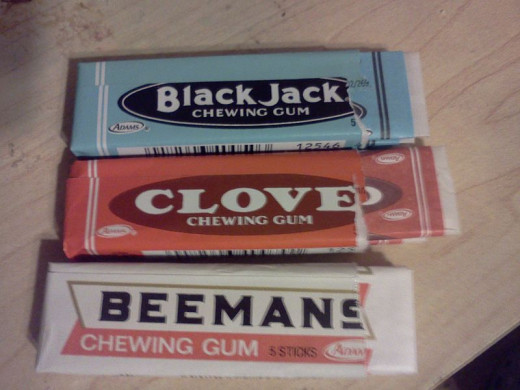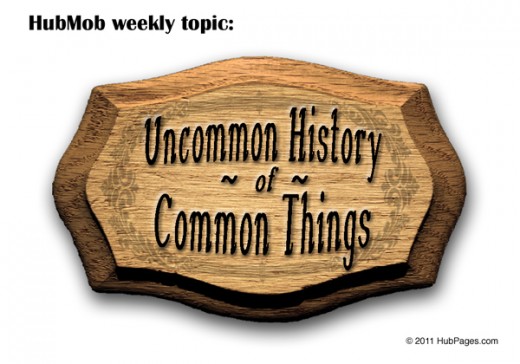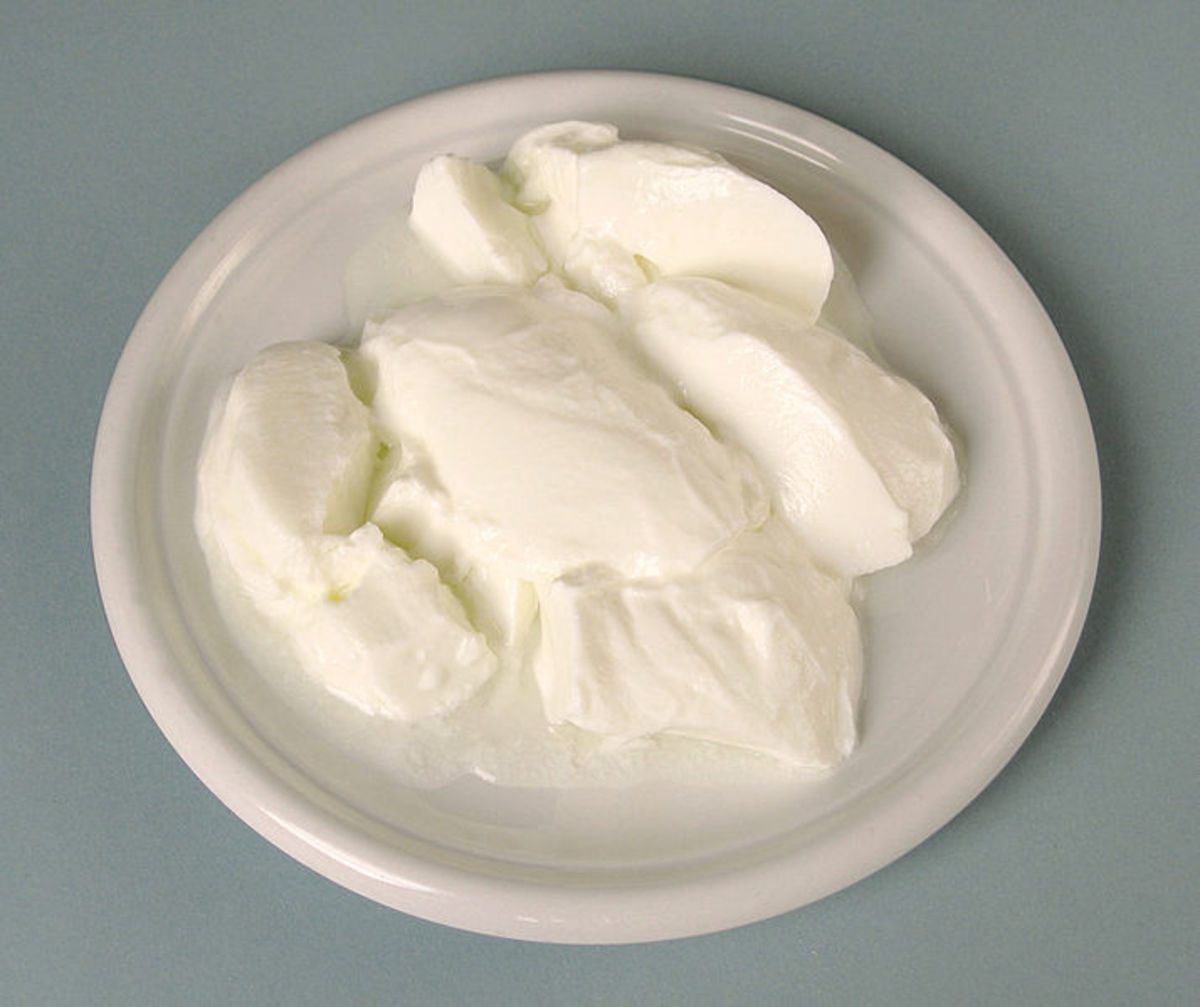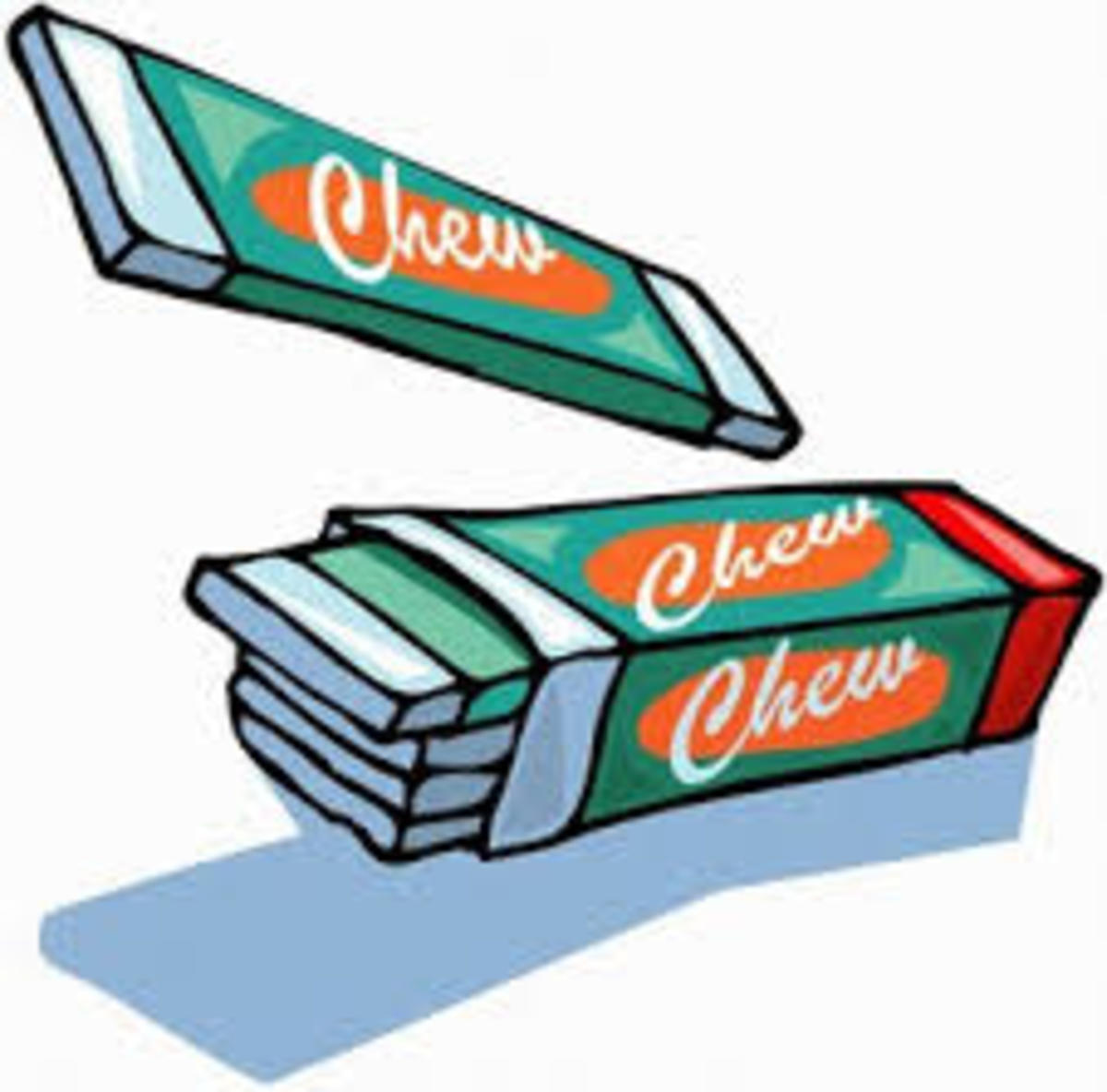History, facts about gum to chew Neolithic Period, Greece, to Present

Apparently humans have had a tendency to want to chew on something like gum for a long time seemingly as far back as the Neolithic Period. Chewing gum with teeth imprints dating back 5000 years has been found that was made of Bircth bark tar and found in Kierikki, Yli-li, Finland. It is thought that the bark tar the gum was made of had antiseptic qualities and other medicinal values. The Aztecs, as a base for making a gum-like substance, used Chicle.
Back in my grade school and high school days the greatest offense seemed to be chewing gum in class. I’m not sure what the real objection was, but I understand that there are some places where gum chewing is discouraged now because of the tendency to put the used gum under tables, chairs, theater seats, and on floors.
I remember chewing gum songs on the radio When I was a kid. One was "Does The Spearmint Lose Its Flavor on the Bedpost Overnight?” a song first released in 1924 by the happiness Boys.
"Does Your Chewing Gum Lose Its Flavour (On the Bedpost Overnight?)" by Lonnie Donegan in 1961.
Another was something like
Chew, chew chew
Chewing gum
How I love Chewing gum
Some History
The Ancient Greeks chewed resin from the mastic tree. The Maya chewed Chicle from the sapodilla. American Indians chewed Spruce sap mixed with beeswax.
Thomas Adams learned about Central American Chicle from Antonio Lopez de Santa Anna. Adams tried to market the Chicle for tire making then realized that if it were flavored it would make a long lasting chewing gum. Thus Adams made New York chewing gum and introduced it in January 1871 selling for a penny a stick. Eventually Adams and six other firms merged to become “Chiclets” in 1899.
The New England settlers first got chewing gum from the American Indians and in 1848 John B. Curtis developed and sold the first commercial chewing gum. He called it “The state of Maine Pure Spruce gum.” Later a paraffin gum was developed and became more popular. William Semple filed an early patent on chewing gum December 28, 1869.
Gum made from Chicle and other latexes had a smoother, softer texture and flavor and lasted longer. Due to lower cost and availability most chewing gum companies switched to using synthetic gum bases. Glee Gum claims to be the only company still using all natural Chicle.


Many Kinds of Chewing Gum
You can get gum in many shapes, forms and flavors. A favorite with kids is Gumballs, they are round like a little ball and coated. Often gumballs are sold in dispensing machines. They are often called “screwballs in the United Kingdom since they are often at the bottom of a “Screwball ice cream treat.”
· Another favorite with kids is bubblegum
· Sugar free gum made with various artificial sweeteners.
· Candy & gum combinations, usually bubblegum at the center of a lollipop
· Center filled gum
· Cut & wrap gum the name of a machine that wraps the gum, usually in a chunk, cube, or cylindrical shape.
· Pellet gum- pillow shaped and coated and sold usually in blister packs.
· Functional gum- used as a delivery system or other practical function.
· Medicated gum-used as delivery system for medicines.
· Powdered gum- free flowing powder compressed into shapes.
· Stick gum-rectangular, thin, flat, slab of gum.
· Ribbon gum or tape gum-like stick gum but longer and coiled up.
· Tube gum or spaghetti gum- soft gum that can be squeezed from a tube.
Note: list adapted from Wikipedia article.
Chewing gum in the armed services
Since World War I, the United States armed services have supplied personnel with chewing gum because it helps improve concentration and relieve stress. The U.S. military is involved in development of a chewing gum with an anti- bacterial agent that would help with oral hygiene on the battlefields.
A cafinated gum has been supplied to troops to help with alertness.
The New Zealand Defense force has a recaldent gum for their service personnel.
Health
Sugar free gum using xylitol-sweetening agent has had some success in reducing cavities and plaque. Orbital has similar benefits but only about a third as effective. Some studies indicate that it is the chewing activity that has the beneficial effect.









